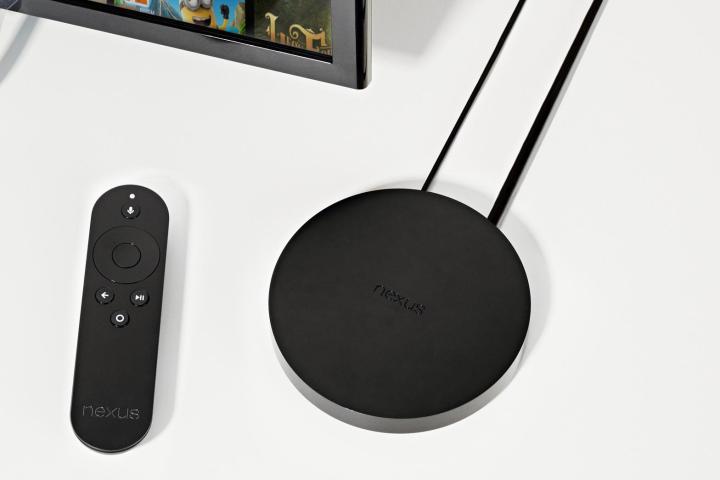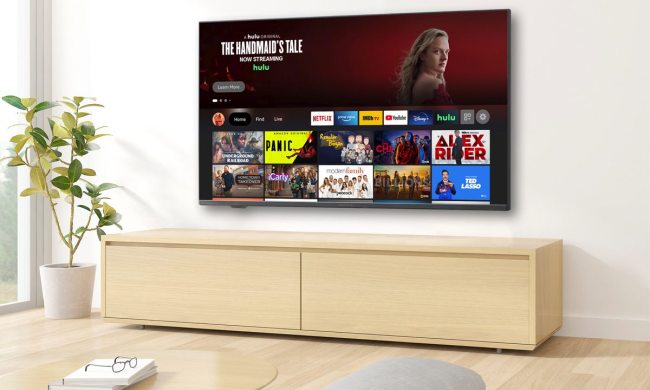
To be fair, The company made an early appearance at the set-top box soirée masquerading as Google TV, but was promptly booted out for being unruly, uncooperative and just generally sucking really hard. Now, having undergone a dramatic wardrobe change and an attitude adjustment, Google is back, going by the name Android TV, and flashing the Nexus Player around like some kind of VIP pass. But it’s going to have to do some serious schmoozing if it wants to be welcomed back into what became a real rager of a product category in its absence.
Like what? Here are seven things the Nexus Player must do in order to compete with Roku, Amazon Fire TV and Apple TV.
 Apps, Apps, Apps, and Hulu Plus
Apps, Apps, Apps, and Hulu Plus
Roku offers more apps than anyone knows what to do with, and Google needs to do the same for the Android TV platform. Also, if the App is free on a competing platform, then it needs to be free for the Nexus Player. Take Plex, for instance. Why would anyone want to spend $5 for an app Roku users get for free? And if there has to be a charge for the app, we should be able to pay in normal currency. No points, coins, medallions or any other ridiculous funny money, please (We’re looking at you, Fire TV!).
Also, your little beef with Hulu, Google? The one that prevented Hulu from appearing on Google TV? Figure it out. Bury the hatchet, kiss and make up, do whatever you must, because Hulu Plus is an important player and if you two can’t get along, then we don’t want you here.
Leverage Google play store – early run movies, good deals on TV shows
The best thing Google has going for it is the Google Play store. It’s time Google started sticking it to Apple and securing killer content deals for movies, TV shows, and music so that Googligans won’t have a reason to visit iTunes. It wouldn’t hurt if Google sold the content at a slightly lower price, either.
Snappy operation
Nothing kills a good set-top box buzz like slow-loading apps, sluggish navigation, and operational hang-ups. The Nexus Player needs to be fun to operate, and fast = fun. The Player does feature a 1.8GHz quad-core Intel Atom processor, as well as an Imagination PowerVR Series 6 Graphics 2D/3D Engine for gaming, so we’re optimistic it will do well in this regard.
Smartphone mirroring for all mobile devices.
People like being able to share their pictures, videos and music. The Nexus Player has the opportunity to make that process easier than anyone else. Forget AirPlay, let everyone – and this includes iOS users – simply and quickly mirror their phone on the big screen through the Nexus Player. Whichever company or device masters this first, wins.
Strong and reliable Wi-Fi (because no Ethernet for now)
Dear Google, why the hell didn’t you make Asus put an Ethernet adapter in the Nexus Player? In this day and age, when CAT 5 snakes freely through more and more homes, and High Definition content is going mainstream, why would you deny us the option to have a stable, wired network connection, free of interference from microwaves, competing wireless products and metallic infrastructure? If you’re going to force us to use Wi-Fi, then you best be sure the receiver/transmitter in the Nexus Player is both reliable and strong like bull.
Universal Search
For all that is decent and pure in this world, please give us true universal search, or at least a search engine that polls all the major apps, and not just the Google Play store. If I search for “House of Cards,” I want to see that I can get it from Netflix and Amazon and Google Play. Take a page from Roku’s book, then make it better, Google. If you can make it easy for us to find the least expensive option for what we’re wanting to watch, and be smart enough only to recommend those services that we have a subscription to, then you will have scored a major coup.
Remote control mobile device app
File this under: Duh.




